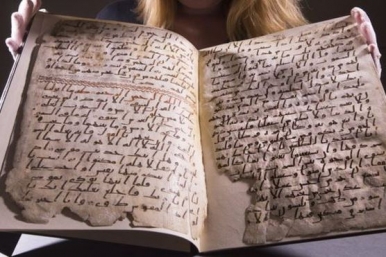
Jamal Bin Huwaireb, Managing Director of the Mohammad Bin Rashid Al Maktoum Foundation, has been among a select few who have personally studied the Quranic manuscript, which runs into two pages.
Bin Huwaireb told the GNews that radiocarbon analysis dated the parchment with the inscribed text to the period between AD 568 and AD 645 with 95.4 per cent accuracy. This means, he added, that the manuscript was written by someone who was alive close to the time of Prophet Mohammad (PBUH). The Prophet lived between AD 570 and AD 632.
"We need to study the handwriting further, as this Quran seems to have been for someone important, and written by a member of upper class society who was also a well-educated person,” said Bin Huwaireb.
The test was carried out in a laboratory at the University of Oxford, which was also responsible for dating the skeletal remains of Richard III.
According to David Thomas, Birmingham University’s professor of Christianity and Islam, the radiocarbon dating was based on the death of the animal whose skin was used for the parchment, not when the writing was completed.
This means the manuscript could be a few years later than the age range ending in AD 645, with Prof. Thomas suggesting possible dates of AD 650 to AD 655. These years could have overlapped with the production of copies of the Quran during the rule of the Caliph Othman between AD 644 and AD 656, which were intended to produce an accurate, standardized version to be sent to Muslim communities.

Add new comment